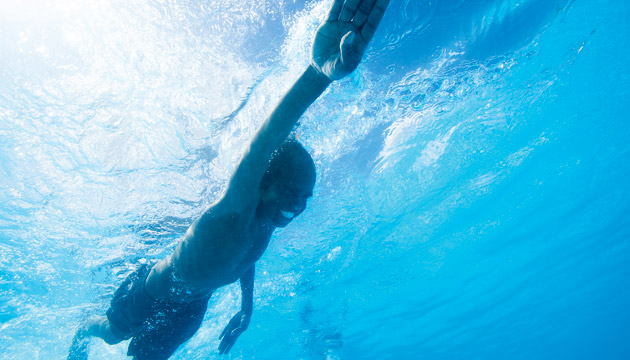School attendance rises when swimming teacher Mark Walker visits remote Indigenous communities.
Story and photo by David Hancock
Mark Walker has gladly traded a life of surfing and coastal culture for teaching Aboriginal children how to swim in remote communities of the Northern Territory. Instead of catching waves at Byron Bay and Lennox Head in New South Wales, Mark Walker now drives thousands of kilometres from Darwin to 16 communities such as Kintore, 500km west of Alice Springs, or Ngukur, close to the Roper River in the Gulf of Carpentaria, where he spends two to four weeks running swimming and lifesaving classes. These lessons are among the most popular in the bush and school attendances increase markedly when Mark is in town.
“Swimming is just as popular as football in many communities,” Mark says. “Many of the Indigenous kids are highly talented swimmers who are reaching Swimming Australia benchmarks without even training. A lot ask me about career opportunities with sport and coaching, so swimming is opening their minds to the future.”
Mark, who runs the classes under the auspices of Swimming Australia and Swimming Northern Territory in conjunction with local schools, took up the job four years ago. He was an experienced swimming instructor and coach who worked in the Northern Rivers region teaching and coaching children, Masters swimmers and triathletes for more than 20 years, but he had never been to a remote Indigenous community. “It was a little bit of a shock to see how poorly resourced they are compared to mainstream Australia, but the people are very generous, especially when they know you are there to help the kids,” Mark says. “Unlike many other government employees who travel out bush, I don’t go home on the weekend. I prefer to stay in the community where I get to meet the kids’ parents and grandparents and learn a lot about their way of life and their incredible knowledge of country. I consider it a privilege to be there.”
Over the past 20 years many swimming pools have been built in remote communities to improve the health of children, many of whom suffer from middle-ear infections, skin infections and other ailments. They are also used as incentives to get kids to school – “no school, no pool” is a common rule.
“I’m not fully across the health data but I can tell you, like anybody, Indigenous kids love getting wet; why wouldn’t you? It is so hot out there sometimes, and there are no crocodiles in pools.
“At some schools attendance goes up dramatically [when swimming is incorporated into the curriculum].”
This story excerpt is from Issue #111
Outback Magazine: Feb/March 2017










